



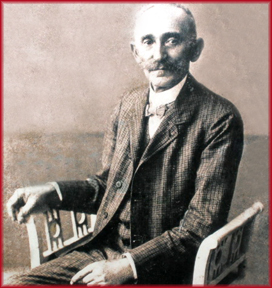
David Kohn
I trace my paternal Kohn family back to 1804, the year my great-great-grandfather Mayer Kohn (Meir ha-Cohen) was born in Debrecen, Hungary. He and his wife Katalin Zonnewirth had four daughters and two sons. After Katalin’s death in 1874, Mayer emigrated to Jerusalem. He died there in October 1877 and was buried in the Mount of Olives cemetery. Meyer’s letter from Jerusalem, dated 1876, tells about his life in his new home and the social and political situation of the day. The rest of the Kohn family stayed in Hungary and grew to well over one hundred souls.
My immediate family story starts with my great-grandfather David Kohn, one of Mayer’s sons, who was born in 1842 in Debrecen. After the loss of his first wife, Helen Furst, he married Judit Schwarz of Nagyvarad (Oradea) in 1868. Judit gave birth to eight children, but only three survived. David was in the lumber business in Szatmarnemeti. It is believed that he died in 1933, possibly in Szatmar, but this is not confirmed.
One of the sons of David and Judit was my grandfather Sandor (Yitzchak) Kohn, who was born in Nagyvarad in 1882. He moved to Miskolc at the beginning of the twentieth century and married Malvin (Malka) Muhlhoffer in 1904. At the time of their marriage, Sandor was a salesman. Eventually, he opened his own haberdashery. After he went bankrupt, he became a traveling salesman (utazo).
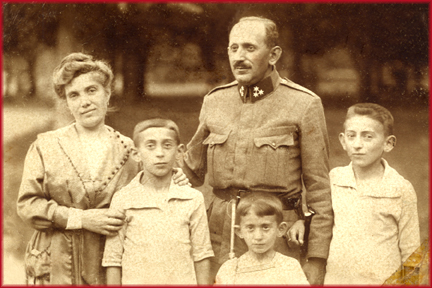
Malvin and Sandor Kohn with their sons Geza, Imre, and Miklos
My grandmother Malvin, who was born in 1879 in Tornaalja, Hungary (now Tornala, Slovakia), was a very religious woman who kept all of the commandments. Her parents were Moritz Muhlhoffer (1845-1887), born in Miskolc, who was a teacher in Onod, and Fani Friedlander (1850-1921), who is buried in Miskolc.
My grandparents Sandor and Malvin Kohn had three sons, all of whom were born in Miskolc: Miklos (Moshe), born in 1906; Geza (Goedelyahu), born in 1908; and Imre (Boruch Yisroel), born in 1912. Both my grandparents perished in Auschwitz in 1944. Their three sons changed their surname from Kohn to Kovács in 1927, after the “numerus clauses” laws were enacted, which put a quota on Jews’ attendance at educational institutions, etc.
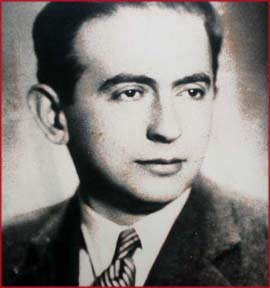
Miklos (Kohn) Kovács
Miklos, the oldest son, studied chemical engineering at the Université de Genève in Switzerland from 1925 to 1931. To earn money during his student days, he played the violin in a Swiss orchestra. As a Jew, he had a tough time getting a job in Hungary, so he went to Bulgaria in 1941 and worked there as an engineer. During the war, he was a member of the Bulgarian underground. In 1945, he returned to Hungary, managed two factories, was a department head in the Ministry of Metallurgy and Machine Industry, published technical articles, and was awarded high government honors. Miklos fathered two daughters. He died in Budapest in 1954 at the age of 48.
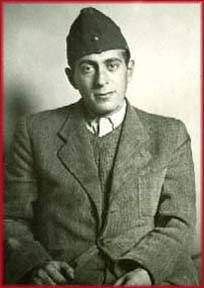
Geza (Kohn) Kovács in the uniform of the Jewish forced-labor battalion
Geza, my father, the middle son, graduated from the Commercial High School in Miskolc and then studied at the Textile Engineering School in Mulhouse, France. He sold insurance in the early 1930s and later became the manager of a textile factory. Around 1941, he was drafted into the Hungarian Jewish Labor Service and served in the Ukraine. When his unit returned to Hungary in October 1944, he escaped and hid in Budapest. After WW II, he started a grocery business, returned to Miskolc, and later held various high management positions in government-owned business organizations in Budapest and represented Hungary at the 1958 Brussels World’s Fair. He died in Budapest in 1982, at the age of 75.
Imre was Sandor and Malvin Kohn’s youngest son. He wanted to become a lawyer, but never got the chance. He married Magda Fischer in 1939 and she gave birth to a son Istvan in 1941. Unfortunately, both his wife and son were killed in Auschwitz in 1944. Imre was also in the Jewish Labor Service and eventually ended up in concentration camps. After WWII, during the Communist era and the Russians occupation of Hungary, he and his second wife Klara tried to escape from the country, but were arrested and served time in jail. Finally, during the 1956 Hungarian revolution, they were able to go to Austria and eventually to Australia. Imre sold food products in Sydney and died in 1988. His wife, daughter, and two grandchildren (who are both lawyers) live in Sydney.

Elias Weisz and Eszti Groszman
My maternal great-grandparents were Elias Weisz (1817-1893) and Eszti Groszman (born 1826). According to his death certificate, Elias was a shoemaker in Miskolc, where all of their nine children were born.
Their youngest son, my grandfather, Elyakim Jakab Jozsef Weisz (1862-1919) attended two years of medical school in Vienna, then returned to Miskolc to work as a businessman. In 1892, he married Maria Bauer (1872-1932) of Eger. Maria was the daughter of Hermann Bauer (1823-1893), a tobacco wholesaler in Eger, and Leonora Perlgrund (1830-1912) of Halasz and Obuda. Leonora’s father Kalman Perlgrund (born 1775) was a member of the board of directors of the Obuda Jewish community for over thirty years.
My grandparents Jozsef Weisz and Maria Bauer had four children: Hermin (1893-1981), Etel (1897-1971), Laszlo (1901-1965), and Livia (1911-2000). The first three children were born in Miskolc. The last child, Livia, my mother, was born in Budapest. The family name was officially changed from Weisz to Vermes in 1919.

Livia Vermes (left) with her brother Laszlo and his wife Ilona (1960)
My mother Livia Vermes married my father Geza Kovács in Budapest in 1931 and divorced him in 1934. My mother, who studied ballet from a young age, had her own dancing school in Miskolc in the 1930s. She was very well known in the Miskolc area and, after WWII, by the Miskolc society of Holocaust survivors in New York. In 1998, three ladies in Sydney, Australia told me that they had studied dancing with my mother. About 1937 she got married to Bela Reiner, who had a furniture business on Szechenyi utca (the main street of Miskolc) and a small furniture factory. From this marriage she had a son, István Reiner, who perished in Auschwitz at four years of age. My mother survived Auschwitz, but never again lived in Hungary after WWII. She emigrated to the US in 1947 and died in Austria in 2000.
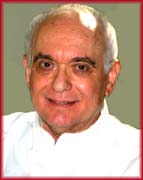
John (Janos) Kovacs
John (Janos) Kovacs, author of this article, is the son of Geza Kovács and Livia Vermes. He was born in Nyiregyhaza, Hungary in 1932. He lived in Miskolc from 1934 to 1944 and attended the Erzsebet Jewish Elementary School for four years and the Frater Gyorgy Gimnazium for one year. He was only 11 years old, but gave his age to be 15, when he was selected for forced labor service at the brick factory to which many Jews of Miskolc were herded in May, 1944. He escaped to Budapest, where he spent the remaining war years with relatives. He arrived in the United States in 1947 from the Feldafing DP Camp in Germany. John Kovacs received his BA in 1954 and his MBA in 1960 from New York University and an MA from Wayne State University in 1985. He served in the US Army from 1954 to 1956, then worked for General Motors in various management positions in the US and overseas for more than forty years. He is married to Suzanne and has two sons, George and Henry. In 2008, he was living in Bloomfield, Michigan.
Credits: Page design copyrighted © 2008 by Helene Kenvin. Text and photographs copyrighted © 2008 by John J. Kovacs. Text edited and page created by Helene Kenvin. All rights reserved.